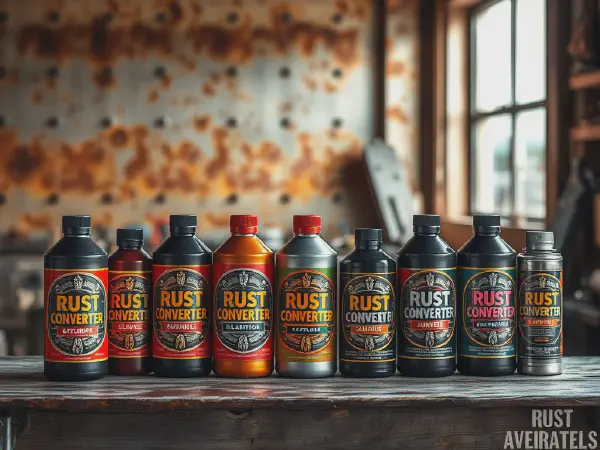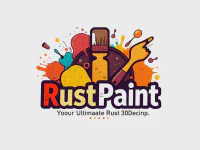Ultimate Guide to Rust Converter Products for Metal Protection

A Comprehensive Guide to Rust Converter Products
Rust Converter Products are essential for protecting metal surfaces from the damaging effects of rust. They are formulated to convert rust into a stable, paintable surface, thereby preventing further corrosion. Their unique chemical makeup not only halts the progression of rust but also prepares the surface for subsequent coating and painting, making them convenient and effective solutions for both DIY enthusiasts and professional contractors.
To effectively restore your metal surfaces, consider investing in high-quality Rust converter products that protect against future corrosion.
In today’s world, where rust can compromise the integrity of vehicles, machinery, and structures, understanding the role of Rust Converter Products is critical. These products come in various forms and can be used on multiple surfaces, from automotive parts to household items. The application of rust converters is particularly vital in areas prone to moisture, as it helps in extending the lifespan of metal components.
Additionally, Rust Converter Products are increasingly popular due to their ease of use and affordability compared to traditional rust removal methods. Rather than scrapping or grinding rusted components, users can apply these products directly onto rusted areas, effectively saving time and resources. With the plethora of options available, choosing the right rust converter can make a significant difference in the outcome of rust management projects.
This article delves into the various aspects of Rust Converter Products, including their mechanisms, types available, application techniques, comparative analyses of popular brands, DIY project guidance, environmental impacts, and maintenance tips post-application. Understanding these facets can aid consumers in making informed decisions about rust management solutions.
Ultimately, Rust Converter Products offer an innovative means to combat rust, and their proper application can lead to substantial savings and enhanced durability of metal surfaces.
Understanding Rust Converter Products
Rust Converter Products are specialized chemical solutions designed to treat rusted metal surfaces. They work by chemically converting the iron oxide (rust) into a stable compound, typically iron tannate, which is black and paintable. This conversion process not only neutralizes the rust but also provides a protective layer that can inhibit further corrosion.
These products typically contain active ingredients such as tannic acid or phosphoric acid, which trigger the conversion reaction on contact with rust. After applying a rust converter, the surface is often more suitable for painting, improving the adhesion of protective coatings and paints.
The benefits of using rust converter products include ease of application, time savings, and the ability to protect surfaces without extensive preparatory work. They can be applied directly over rust without the need to sand or grind down to bare metal, making them an excellent choice for restoration projects.
Types of Rust Converter Products
Rust converter products generally fall into three categories: water-based, solvent-based, and aerosol sprays. Each type has its characteristics, applications, and ideal use cases.
Water-based rust converters are user-friendly, environmentally friendly, and easy to clean up. They are suitable for interior and exterior applications and typically have lower levels of volatile organic compounds (VOCs). These products may take longer to cure compared to solvent-based options but are preferred for user safety and environmental considerations.
Solvent-based rust converters contain organic solvents and typically provide faster drying times and better adhesion. However, they can emit higher levels of VOCs, requiring good ventilation during application. These products are ideal for outdoor or industrial use, where durability and quick turnaround are essential.
Application Techniques for Rust Converters
Before using rust converters, surface preparation is crucial. This often involves cleaning the surface to remove any loose rust, dirt, grease, or contaminants. A wire brush or sandpaper may be necessary for effective cleaning, although not all products require complete removal of rust, as they are designed to work directly over it.
Application methods vary based on the product type; some rust converters can be applied with a brush, roller, or spray. It's important to follow the manufacturer's instructions regarding application thickness, drying times, and subsequent paint application to achieve optimal results.
Safety precautions when using rust converters include wearing gloves, goggles, and a mask to protect against fumes. Ensuring proper ventilation during application helps mitigate any health risks associated with chemical exposure.
Comparative Analysis of Popular Rust Converter Brands
Numerous brands offer rust converter products on the market, each with unique formulations and performance attributes. Some top-rated rust converter products include Rust-Oleum Rust Reformer, Permatex Rust Treatment, and Corroseal Rust Converter.
Brand comparisons often focus on factors such as efficiency, drying time, ease of application, and overall durability against rust. Reviews by users can also provide insights into which products yield the best results for specific applications.
Value for money in rust converter products takes into consideration not just the cost per unit but also the coverage area and effectiveness. Higher-priced products may offer superior performance, while budget options may suffice for less demanding projects.
DIY Rust Conversion Projects
For DIY enthusiasts, using rust converters can be a straightforward process. A step-by-step guide would involve first cleaning the rusted area, applying the rust converter generously, allowing adequate drying time, and finally painting or sealing the treated surface to enhance protection.
Common mistakes to avoid include failing to prepare the surface properly, applying the converter in unsuitable weather conditions, or neglecting safety measures. It's crucial to read instructions carefully to prevent subpar results.
Many inspirational DIY projects using rust converters include restoring outdoor furniture, treating tools, or revamping vehicle parts. These projects highlight not only aesthetics but also preventive maintenance that extends the lifespan of metal items.
Environmental Impact of Rust Converter Products
Eco-friendly rust converter options are available, focusing on formulations using plant-based ingredients and lower VOC levels. These products offer effective rust management while minimizing environmental impact, aligning with sustainable practices.
The impact of chemical ingredients on the environment, particularly from solvent-based products, raises concerns regarding air quality and ecosystem degradation. Opting for eco-friendly formulations can help mitigate these risks.
Proper disposal and sustainability practices for rust converter products involve following local regulations for hazardous materials and ensuring that leftover products are disposed of in a safe and environmentally-conscious manner.
Maintenance after Rust Conversion
Maintaining treated surfaces is critical for long-term protection against rust. Regular inspections and touch-ups with both rust converters and paint help ensure that surfaces remain intact and protected from moisture.
Tips for preventing future rust include ensuring proper drainage around metal surfaces, applying additional protective coatings, and minimizing exposure to harsh weather conditions whenever possible.
Reapplying rust converters may be necessary based on environmental factors and usage. Signs of potential rust reformation can prompt timely interventions, reinforcing the value of rust converters as a proactive maintenance strategy.
